During the seventeenth century, the physicist Isaac Newton conducted a series of experiments studying the properties of light. Newton encountered a puzzling enigma. He found that light behaved both like a particle and like a wave. Some of his experiments made the most sense if he interpreted light as a stream of tiny particles or “corpuscles”. On the other hand, he observed clear interference effects indicative of waves. Further, he examined the surface of mirrors using the early microscopes of his time. He found that while the surface appeared smooth to the naked eye, the surface of a mirror under a microscope was rough with hills and valleys. If light was tiny particles like billiard balls bouncing off the surface of the mirror, the light particles should scatter randomly in all directions, rather than forming a reflected image. Reflection in a mirror might naively seem like evidence for light particles, but microscopic investigation showed that it was not that simple. Newton published his results in his book Opticks, a semi-popular book written in more accessible English rather than the Latin preferred by the scholars of his time. Opticks helped contribute to Newton’s broad reputation with the public in England. Newton presented his results with limited commentary, focusing on the empirical facts rather than theory. Nonetheless, he had some theories.
In particular, Newton studied a phenomenon that has come to be called Newton’s rings, although Newton did not actually discover the phenomenon. The phenomenon of Newton’s rings is an interference pattern caused by the reflection of light between two surfaces – a spherical surface and an adjacent flat surface. When viewed with monochromatic light such as a modern laser the interference pattern is a series of concentric, alternating light and dark rings centered at the point of contact between the two surfaces. When viewed with white light (Newton used white light for many of his experiments) Newton’s rings is a concentric ring pattern of rainbow colors.
Newton’s rings were essentially impossible to explain either by picturing light as a simple particle like a billiard ball or a particle that interacted with matter through a simple repulsive force that grew weaker with distance similar to the modern repulsive electrical force between two like charges. One could, for example, explain the reflection of light from the microscopically rough surface of the mirror by introducing a repulsive force between the light particle and the body of the mirror. In this case, the repulsive force would be averaged over the surface of the mirror. The light particle would never actually strike the rough surface, but rather slow down and bounce backward in the air above the surface of the mirror, feeling an average repulsive force as if the mirror were perfectly smooth. It was necessary to introduce some sort of wave or vibration to explain Newton’s rings.
Newton speculated on the existence of an “Aetherial Medium” permeating the universe to account for the interference effects, electricity, magnetism, and gravity. Here is Newton’s Query 21 from the Project Gutenberg version of Newton’s Opticks. When Newton refers to “alternate Fits of easy Transmission and easy Reflexion” he is referring to interference effects such as Newton’s rings that he observed. It is also significant, for reasons to be explained below, that Newton realized that the vibrations in his hypothetical Aether must travel faster than light to account for his observations (the light particles travel at the experimentally measured speed of light but the waves in the Aether must travel faster to produce some of the observed interference effects).
(Note: Qu. is an abbreviation for Query or Question)
Qu. 21. Is not this Medium much rarer within the dense Bodies of the Sun, Stars, Planets and Comets, than in the empty celestial Spaces between them? And in passing from them to great distances, doth it not grow denser and denser perpetually, and thereby cause the gravity of those great Bodies towards one another, and of their parts towards the Bodies; every Body endeavouring to go from the denser parts of the Medium towards the rarer? For if this Medium be rarer within the Sun’s Body than at its Surface, and rarer there than at the hundredth part of an Inch from its Body, and rarer there than at the fiftieth part of an Inch from its Body, and rarer there than at the Orb of Saturn; I see no reason why the Increase of density should stop any where, and not rather be continued through all distances from the Sun to Saturn, and beyond. And though this Increase of density may at great distances be exceeding slow, yet if the elastick force of this Medium be exceeding great, it may suffice to impel Bodies from the denser parts of the Medium towards the rarer, with all that power which we call Gravity. And that the elastick force of this Medium is exceeding great, may be gather’d from the swiftness of its Vibrations. Sounds move about 1140 English Feet in a second Minute of Time, and in seven or eight Minutes of Time they move about one hundred English Miles. Light moves from the Sun to us in about seven or eight Minutes of Time, which distance is about 70,000,000 English Miles, supposing the horizontal Parallax of the Sun to be about 12”. And the Vibrations or Pulses of this Medium, that they may cause the alternate Fits of easy Transmission and easy Reflexion, must be swifter than Light, and by consequence above 700,000 times swifter than Sounds. And therefore the elastick force of this Medium, in proportion to its density, must be above 700000 x 700000 (that is, above 490,000,000,000) times greater than the elastick force of the Air is in proportion to its density. For the Velocities of the Pulses of elastick Mediums are in a subduplicate Ratio of the Elasticities and the Rarities of the Mediums taken together.
As Attraction is stronger in small Magnets than in great ones in proportion to their Bulk, and Gravity is greater in the Surfaces of small Planets than in those of great ones in proportion to their bulk, and small Bodies are agitated much more by electric attraction than great ones; so the smallness of the Rays of Light may contribute very much to the power of the Agent by which they are refracted. And so if any one should suppose that AEther (like our Air) may contain Particles which endeavour to recede from one another (for I do not know what this AEther is) and that its Particles are exceedingly smaller than those of Air, or even than those of Light: The exceeding smallness of its Particles may contribute to the greatness of the force by which those Particles may recede from one another, and thereby make that Medium exceedingly more rare and elastick than Air, and by consequence exceedingly less able to resist the motions of Projectiles, and exceedingly more able to press upon gross Bodies, by endeavouring to expand it self.
Subsequent physicists emphasized Newton’s theory of light particles alone. Physics students are often taught incorrectly that Newton’s theory of light was a simple theory of tiny light particles, implying that Newton was unaware of wave-like phenomena such as Newton’s rings. In the early nineteenth century new observations of interference effects by Thomas Young and others led to the abandonment of the particle theory of light. A wave theory of light became dominant. The electromagnetic theory of Michael Faraday and James Clerk Maxwell seemed to definitively demonstrate that light was an electromagnetic wave, possibly in the mysterious luminiferous ether, with no particle characteristics at all. Maxwell’s Equations seems to preclude particles of light.
The late nineteenth and early twentieth century saw new electrical equipment and experiments: light bulbs, vacuum tubes, and so forth. Experimental physicists and other experimenters encountered a plethora of bewildering results. Both light and the recently discovered electron seemed to behave sometimes like a wave and sometimes like a particle. In one experiment, electrons seemed to diffract through a crystal. Each individual electron appeared randomly as a discrete localized point on a sheet of photographic film, but these points accumulated to form an interference pattern as many electrons passed through the crystal. The results were baffling and no good predictive theory existed. Several partial theories competed for the explanation of the strange results, notably the so-called “matrix mechanics” of Werner Heisenberg, a highly abstract theory associated with the University of Gottingen and Niels Bohr’s Institute for Theoretical Physics in Copenhagen.
Prince Louis de Broglie, a graduate student and perhaps significantly a student of the history of physics, proposed that the electron was accompanied by a mysterious wave to account for some of the baffling results. de Broglie’s suggestion led the physicist Erwin Schrödinger to seek a “wave equation”, a partial differential equation that would govern this mysterious wave and enable precise quantitative predictions. After an unknown number of attempts (certainly more than one as it is known Schrödinger tried at least one equation that did not work), Schrödinger found the famous partial differential equation that bears his name:
[tex]\displaystyle \imath\hbar\frac{\partial}{\partial t}\Psi (x, t) =\frac{-\hbar^2}{2m}\frac{\partial^2{\Psi}}{\partial{x^2}} + V(x)\Psi(x)[/tex]
where [tex]\hbar[/tex] is Planck’s constant divided by [tex]2 \pi[/tex], [tex]\Psi[/tex] is the mysterious “wave function”, [tex]V(x)[/tex] is the potential such as the electrical potential of the hydrogen atom, and [tex]x[/tex] is the position. When Schrödinger applied this equation to the hydrogen atom, thought to consist of a single electron somehow “orbiting” a positively charged nucleus, he was able to compute both the spectrum of hydrogen and the intensity of the spectral lines of hydrogen. He was also able to quickly demonstrate that his equation was mathematically equivalent to the abstruse “matrix mechanics” of Werner Heisenberg.
Schrödinger’s equation took the small world of atomic physics by storm. It worked and it was much easier to use than “matrix mechanics”. Most physicists were familiar with partial differential equations and wave equations, mainstays of nineteenth century “classical” physics. It was quite easy to learn Schrödinger’s equation, compute, and publish new results. Schrödinger was something of an outsider: an established professor at a lesser university with a colorful and questionable personal life. His success threatened to upend the dominant position of both Niels Bohr and the Institute of Theoretical Physics in Copenhagen and the University of Gottingen in the small world of atomic physics.
There was the peculiarity that no one understood what Schrödinger’s Equation meant. What was [tex]\Psi[/tex] exactly? How could an electron in a hydrogen atom also be a wave or have a wave associated with it? What was waving and why were electrons detected as points on photographic film or as tracks in detectors that seemed to imply a billiard ball like particle flying from point A to point B. The same problem that had puzzled Newton and led to his theories of light particles interacting with waves in the “aether” had reappeared, now for both light particles (photons) and electrons. Schrödinger, de Broglie, Albert Einstein, and a minority of physicists would remain puzzled about the meaning of the wave function [tex]\Psi[/tex] and quantum mechanics. This may be the true state of our knowledge to this day.
A bitter dispute developed between Prince Louis de Broglie, Albert Einstein, and Erwin Schrödinger on the one hand and Niels Bohr and his school, the department of physics at the University of Gottingen, and others over quantum mechanics. Confronted with Schrödinger’s sudden leap forward which threatened to render matrix mechanics and their associated theories irrelevant, the other physicists managed to turn the tables on Schrödinger by arguing that they had figured out the meaning of the wave function [tex]\Psi[/tex]! [tex]\left|\Psi(x)\right|^2[/tex] was the probability density to observe an electron or other particle at x. Nature was inherently probabilistic. Schrödinger may have been able to calculate the spectrum of hydrogen precisely but he didn’t know what he was doing and they did. Schrödinger and Max Born, who conceived of the probabily wave interpretation of [tex]\Psi[/tex], would argue bitterly about the issue for the rest of their lives.
This heated dispute may seem rather silly to outsiders. There is an old saying that “academic disputes are the worst because the stakes are so small.” It is worth remembering that most physicists in the story were German. Germany had been defeated in World War I and suffered enormous economic and political problems. The 1920’s were a difficult time in Germany and to a lesser extent the other European nations still recovering from arguably the worst war in recorded history. In Germany, a tenured full professor in physics was a civil servant with a small salary and more job security than most. Even so, many of the atomic physicists would lose their jobs, and often much more, when Adolf Hitler rose to power a few years later. Max Born would flee to England and lose many of his relatives to the Holocaust. Even today when quantum mechanics underlies many electronic devices in common use like computer chips, lasers, and so forth, there are few jobs for experts in quantum mechanics.
By many accounts, the dispute came to a head at the Fifth Solvay Congress at the Institut de Physiologie in Parc Leopold, Brussels which began on October 24, 1927. Ernst Solvay was a wealthy Belgian industrialist who had organized the Solvay Congresses in his name as an invitation only meeting of the top physicists in the world. The Solvay Congresses continue to this day. The winners came to describe the 1927 Solvay Congress as a decisive victory in which the victors routed de Broglie, Schrödinger, Einstein and their ill conceived ideas and objections to the “revolutionary” new quantum mechanics of Bohr, Born, Heisenberg, and their associates. In fact, de Broglie may have been cowed by attacks on his ideas for a time, but Erwin Schrödinger and Albert Einstein remained openly defiant. The losers were painted with much success as reactionary die-hards clinging childishly to the comforting but outmoded world of “classical” physics.
What then was the problem? de Broglie, Schrödinger, and Einstein had a range of logical and philosophical objections to the so-called Copenhagen theory or interpretation of quantum mechanics of Niels Bohr, Max Born, and their associates. In a nutshell, most objections concerned how, why, and when the supposed probability wave function [tex]\Psi(x)[/tex] “collapsed” into a point particle or a measurement indistinguishable from a point particle. Schrödinger expressed some of his objections in a famous “thought experiment” known as Schrödinger’s Cat. Briefly, Schrödinger envisioned a hapless cat in a sealed box with a radioactive sample that randomly triggers the breaking of a vial of cyanide depending on quantum mechanics. In the Copenhagen version of quantum mechanics, the cat will exist as a superposition of a live cat wave function and a dead cat wave function until a measurement is made. Then, somehow the wave function collapses to either a live cat or a dead cat when a measurement is made. Well…does this happen when the box is opened? Does it happen before the box is opened? What if the scientists who opens the box is in a sealed room? Does the wave function collapse when someone else opens the sealed room to observe the scientist? Schrödinger and Einstein would have none of it.
Einstein eventually summarized his objections to quantum mechanics in a short, elegant, and now famous paper published in Physical Review in 1935 now known as EPR after its authors Einstein, Podolsky, and Rosen. Niels Bohr immediately responded with his own extremely confusing paper published shortly thereafter in Physical Review in 1935 which was widely taken as a decisive rebuttal of Einstein. EPR was largely ignored for many years, but eventually, in part due to the work of the late physicist John Bell, spawned a series of astonishing experiments usually referred to as EPR experiments.
In a typical EPR experiment, an atom undergoes a quantum mechanical transition and radiates two photons in opposite directions. The spin of these photons is related by conservation of angular momentum. The photons travel some distance; some experiments use fiber optics to transport the photons over a considerable distance before a measurement is made. In Copenhagen quantum mechanics, some sort of wave function [tex]\Psi(x,y)[/tex] describing both photons is expanding outward from the atom until a measurement is made. Then, the spin of each photon is measured “simultaneously,” so there is not enough time for even a light signal, the fastest known signal, to travel from one measuring device to another. Nonetheless, quantum mechanics predicts a correlation between the measurements that depends on what measurement one chooses to make. The probability of measuring the spin of photon A with a particular value depends on how the experimenter chooses to measure the spin of photon B. The experimenter cannot communicate actual information between photon B and photon A by doing this, but he can cause a difference that can be detected when the results of measuring the spins of A and B are compared. This correlation has been repeatedly observed in EPR experiments. So, presumably the probability density wave [tex]\Psi(x,y)[/tex] where x is the position of one photon and y is the position of the other photon, is collapsing almost instantaneously and faster than light, something that would seem inconsistent with Einstein’s Special Theory of Relativity which seemingly precludes travel faster than light. The photons in EPR experiments are said to be entangled until a measurement is made. Over time, the EPR theory and experiments have given rise to Quantum Computation and Quantum Cryptography, seeking to exploit the strange properties of quantum entanglement for ostensibly practical purposes.
For the most part, physicists have avoided seeking a mechanism to explain quantum mechanics. There is almost a taboo on doing this, probably partly a consequence of the bitter dispute over the foundations of quantum mechanics. Probably the best known attempt to “explain” quantum mechanics and the meaning of the wave function [tex]\Psi[/tex] is the pilot wave theory of Louis de Broglie and David Bohm. In the 1920’s, de Broglie theorized that the electron was guided or propelled by an extended wave that was the [tex]\Psi[/tex] wave function, not unlike Newton’s aether waves and the light particles. Thus, there was no collapse of the wave function. Rather, the electron followed a definite path in response to the wave function, the pilot wave. The pilot wave would exhibit interference patterns. The statistical behavior came from uncertainties in the starting position of the electron. Unmeasurable tiny variations in the starting position of the electron would be exponentially magnified by the non-linear behavior of the quantum wave function (the pilot wave). de Broglie speculated that the electron was actually a non-linear excitation of the wave itself. de Broglie’s idea was reportedly bitterly attacked at the Fifth Solvay Congress (1927) and de Broglie fell silent until the physicist David Bohm, one of Einstein’s small number of research assistants, rediscovered the pilot wave theory in the 1950s and resolved some of the technical problems in de Broglie’s original attempt. David Bohm would spend much of his life researching and promoting the pilot wave theory. Bohm had many unorthodox ideas and interests and his pilot wave theory, intrinsically rather mechanistic, became associated with mystical viewpoints.
The astute reader will notice that while the pilot wave picture is intuitively appealing for a single particle, a single photon or a single electron, it becomes complicated and problematic for multiple particles including the entangled multi-particle systems. Each particle seems to need a separate wave that guides only it, except for the entangled states of multiple particles in which case a complex multidimensional wave is needed to jointly guide the system of particles until a measurement occurs. David Bohm was able to find a way to do this, but it is complex and cumbersome and lacks the immediate intuitive appeal of the pilot wave for a single particle.
The quantum catfight left a powerful imprint on physics which lasts to this day. A high proportion of theoretical and mathematical physicists trace their academic lineage to the winners. The University of Gottingen and Bohr’s Institute for Theoretical Physics had many alumni. In contrast, de Broglie, Einstein, and Schrödinger had few students. Significantly, one of the major challenges to the reigning Copenhagen theory came from Einstein’s erstwhile research assistant David Bohm. Einstein, de Broglie, and Bohm were all involved in left wing politics which may also have contributed to the unpopularity of their views, especially during the Cold War (Bohm fled the United States under a cloud and eventually settled in England). Schrödinger’s unorthodox and rather questionable personal life may also have been a factor as well. Bohm’s views became associated with mystical and paranormal viewpoints, in part due to Bohm’s association with the spiritual guru Krishnamurti. More generally, quantum entanglement has been embraced by mystics, parapsychologists, and others as evidence of the mystical oneness implicit in most mystical and magical systems and alleged psychic phenomena (see, for example, the 2004 movie What the Bleep Do We Know).
In conclusion, the logical and philosophical problems with quantum mechanics that bothered de Broglie, Einstein, and Schrödinger remain, probably unresolved: the so-called quantum measurement problem. Schrödinger’s Equation and the other equations of quantum mechanics such as the Dirac Equation appear to make accurate predictions, but the meaning of the wave function [tex]\Psi[/tex] probably remains unknown. It seems likely that quantum mechanics is like Kepler’s laws of planetary motion, correct, predictive, but incomplete. It took later work to discover that Kepler’s laws could be derived from Newton’s Theory of Gravitation with its inverse square law:
[tex]\displaystyle F = \frac{Gm_1 m_2}{r^2}[/tex]
where [tex]F[/tex] is the attractive gravitational force, [tex]G[/tex] is the universal gravitational constant, [tex]m_1[/tex] is the mass of body 1 (e.g. the Sun), [tex]m_2[/tex] is the mass of body 2 (e.g. the planet Mars), and [tex]r[/tex] is the distance between the two bodies.
Newton sought a deeper understanding of gravity in the concept of an Aetherial Medium with faster than light waves as illustrated in the quote from Opticks above. So too, the explanation for quantum mechanics may lie in some sort of faster than light waves that transmit signals between entangled particles. Another possibility is a “hyperspace” that connects all points in space-time together, bypassing normal space-time. Even more exotic possibilities may exist. Mathematically speaking, one is looking for a deeper, more fundamental equation or equations from which Schrödinger’s Equation can be derived.
Suggested Reading/References
 |
The Quantum Ten: A Story of Passion, Tragedy, Ambition, and Science |
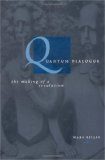 |
Quantum Dialogue: The Making of a Revolution |
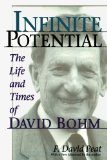 |
Infinite Potential: The Life and Times of David Bohm |
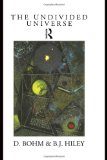 |
The Undivided Universe: An Ontological Interpretation of Quantum Theory |
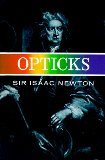 |
Opticks: Or a Treatise of the Reflections, Refractions, Inflections & Colours of Light-Based on the Fourth Edition London, 1730 |
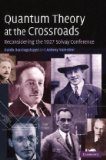 |
Quantum Theory At The Crossroads – Reconsidering The 1927 Solvay Conference |
 |
Speakable and Unspeakable in Quantum Mechanics: Collected Papers on Quantum Philosophy |
Copyright © 2010, John F. McGowan, Ph.D.
About the Author
John F. McGowan, Ph.D. is a software developer, research scientist, and consultant. He works primarily in the area of complex algorithms that embody advanced mathematical and logical concepts, including speech recognition and video compression technologies. He has extensive experience developing software in C, C++, Visual Basic, Mathematica, and many other programming languages. He is probably best known for his AVI Overview, an Internet FAQ (Frequently Asked Questions) on the Microsoft AVI (Audio Video Interleave) file format. He has worked as a contractor at NASA Ames Research Center involved in the research and development of image and video processing algorithms and technology. He has published articles on the origin and evolution of life, the exploration of Mars (anticipating the discovery of methane on Mars), and cheap access to space. He has a Ph.D. in physics from the University of Illinois at Urbana-Champaign and a B.S. in physics from the California Institute of Technology (Caltech). He can be reached at jmcgowan11@earthlink.net.
Sponsor’s message: Receive free weekly updates about new math books. Don’t miss great new titles in the genres you love (such as Mathematics, Science, Programming, and Sci-Fi): https://anynewbooks.com/signup/
Why the assumption that there must be travel between the entangled particles?
It could well be a form of connection. Perhaps extra-dimensional.
Alternatively, it could be a ‘legal’ connection – the same process by which arbitrary universal laws evolved could remain visibly in effect at such fringes as entangled particles.
I suspect the big bang only appears to have been a physical explosion from our perspective and interpretation/interpolation of the residue. It could simply have been an evolution of natural law – simple to complex. There is no time, simply an evolution of change/pattern – thus it’s a mistake to infer anything remarkable about this evolution appearing to occur ‘rapidly’ from our perspective. The evolution of a simple pattern only appears rapid in the context of a more complicated derivative.
Thus the big bang is not a chemical explosion, but a well behaved evolution that appears to have been violent from our perspective (in a more evolved universe).
“…It seems likely that quantum mechanics is like Kepler’s laws of planetary motion, correct, predictive, but incomplete…”
According to my poor understanding the purpose of EPR thought experiment was to prove that QM is incomplete. This is not true, it was proven that QM probabilistic nature is not because we are missing something subtle (like Statistical physics) but is an innate characteristic of Nature maybe because we cannot cope with non-locality…
Hmmm. This doesn’t seem to have changed much since DeWitt and Graham’s 1973 book on the subject (which I read while at CalTech, a longer time ago than is worth reflecting on).
It’s worth adding that it’s fairly clear today that the phenomenon of measurement takes place when entangling gets messed up – that is, when the nicely prepared quantum state interacts with unpredictable statistical mechanical macroscopic objects. No magical influence of human consciousness is required, as was sometimes posited (e.g. by Wheeler, who was also into wild ideas).
A related fascinating item in a PBS NOVA a couple of years back cited work by some German researchers that indicated that photons tunnel instantaneously: they sent microwaves through an evanescent wave (equivalent to tunneling) and found the net delay in the signal to correspond to the forbidden region being traversed instantly. Fun and perhaps important. If anyone is familiar with this work a more substantive citation would be nice.